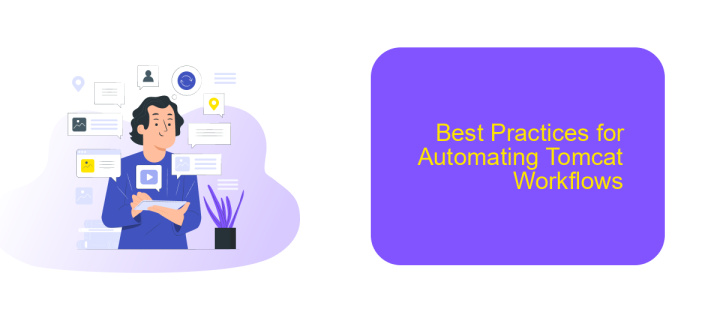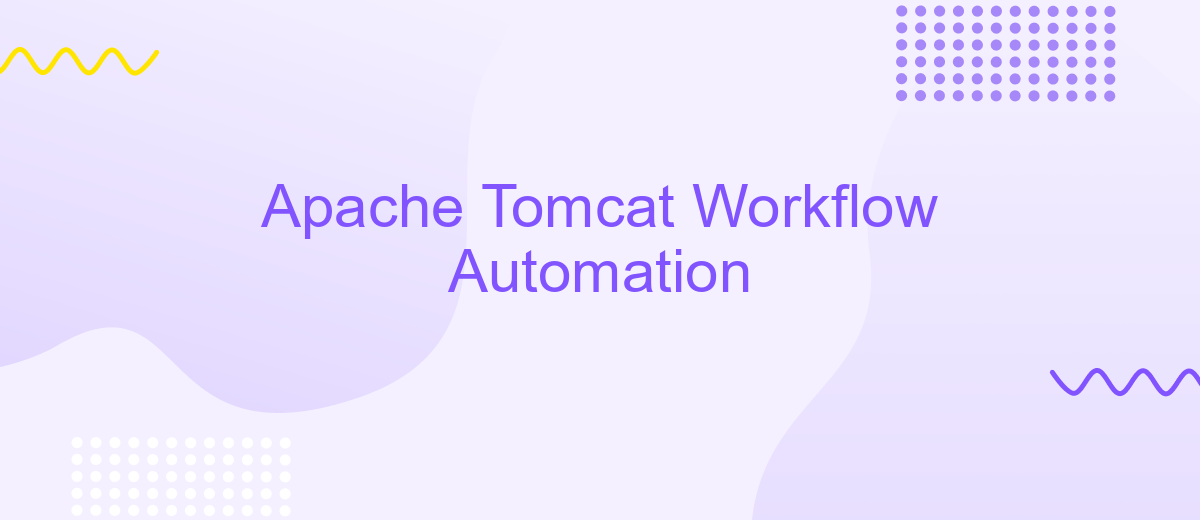Apache Tomcat Workflow Automation
Apache Tomcat Workflow Automation streamlines the management and deployment of web applications by automating repetitive tasks and enhancing efficiency. This powerful tool integrates seamlessly with existing systems, offering robust support for continuous integration and delivery pipelines. By leveraging Apache Tomcat's capabilities, organizations can accelerate development cycles, reduce human error, and maintain high standards of performance and reliability.
Introduction
Apache Tomcat is a widely-used open-source web server and servlet container that powers numerous enterprise applications. Automating workflows within Apache Tomcat can significantly enhance operational efficiency, reduce manual errors, and streamline deployment processes. By leveraging automation tools, organizations can ensure consistent and reliable server management, freeing up valuable resources for more strategic tasks.
- Improved deployment speed and reliability
- Reduced manual intervention and human error
- Enhanced scalability and resource management
- Consistent configuration and environment setup
One such tool that facilitates seamless integration and automation is ApiX-Drive. This service allows for the effortless connection of various applications and systems, enabling automated data transfer and synchronization. By incorporating ApiX-Drive into your Apache Tomcat workflow, you can achieve a more cohesive and efficient operational environment, ultimately driving better performance and scalability.
Benefits of Automating Tomcat Workflows

Automating Tomcat workflows brings numerous advantages to modern IT environments. One significant benefit is the reduction of manual errors, which are common when tasks are performed by hand. Automation ensures that configurations and deployments are consistently executed according to predefined standards, leading to higher reliability and stability of the Tomcat server. Additionally, automation can significantly speed up the deployment process, allowing for faster iterations and quicker response to changing business needs.
Another key benefit is the enhanced integration capabilities that automation tools like ApiX-Drive offer. These tools can seamlessly connect Tomcat with other essential services and platforms, enabling smooth data flow and synchronization. By automating these integrations, organizations can ensure that their systems are always up-to-date and that data integrity is maintained. This not only saves time but also allows IT teams to focus on more strategic tasks, improving overall productivity and efficiency.
How to Automate Tomcat Workflows

Automating workflows in Apache Tomcat can significantly enhance efficiency and reduce manual intervention. By leveraging automation tools, you can streamline deployment, monitoring, and management processes.
- Set up a continuous integration/continuous deployment (CI/CD) pipeline using tools like Jenkins or GitLab CI. This will automate the deployment of your applications to Tomcat.
- Utilize configuration management tools such as Ansible or Puppet to manage and configure Tomcat servers. These tools enable you to automate server setup and maintenance tasks.
- Integrate monitoring solutions like Prometheus and Grafana to automate the tracking of server performance and alerting. This helps in proactive issue resolution.
- Consider using ApiX-Drive for integrating various services and automating data flows between them. This can help in synchronizing data between Tomcat and other systems without manual effort.
By implementing these steps, you can achieve a more resilient and efficient Tomcat environment. Automation not only saves time but also minimizes the risk of human error, ensuring a smoother workflow.
Best Practices for Automating Tomcat Workflows

Automating workflows in Apache Tomcat can significantly enhance efficiency and reduce the potential for human error. To achieve optimal results, it's essential to follow best practices that ensure a smooth and reliable automation process. Firstly, always keep your Tomcat server and associated libraries up to date to benefit from the latest features and security patches.
Another crucial aspect is to meticulously plan your workflow automation by identifying repetitive tasks that can be automated. This planning phase should include a thorough understanding of your deployment pipeline and the specific needs of your applications.
- Utilize automated deployment tools to streamline the process.
- Implement continuous integration (CI) and continuous deployment (CD) practices.
- Leverage monitoring and logging to track the performance of automated tasks.
- Ensure robust error handling and rollback mechanisms are in place.
- Consider using integration services like ApiX-Drive to automate data flows and integrations efficiently.
By adhering to these best practices, you can create a more resilient and efficient Tomcat environment. Automation not only saves time but also helps maintain consistency and reliability across your deployments, ultimately leading to a more robust application infrastructure.
Conclusion
In conclusion, automating workflows in Apache Tomcat can significantly enhance the efficiency and reliability of web application management. By leveraging automation tools, administrators can streamline deployment processes, monitor server performance, and ensure timely updates, thus minimizing downtime and reducing manual intervention. This not only optimizes resource utilization but also allows teams to focus on more strategic tasks, ultimately driving innovation and productivity.
Integrating Apache Tomcat with third-party services like ApiX-Drive further simplifies the automation process. ApiX-Drive enables seamless integration between various applications, allowing for real-time data synchronization and automated task execution. This integration capability ensures that all components of the workflow are in sync, providing a cohesive and efficient operational environment. By adopting such automation and integration strategies, organizations can achieve a more robust and scalable infrastructure, ready to meet the demands of modern web applications.
- Automate the work of an online store or landing
- Empower through integration
- Don't spend money on programmers and integrators
- Save time by automating routine tasks
FAQ
What is Apache Tomcat Workflow Automation?
How can I automate deployments on Apache Tomcat?
What are the benefits of automating workflows in Apache Tomcat?
How do I integrate Apache Tomcat with other services for workflow automation?
What are the common challenges in Apache Tomcat Workflow Automation?
Apix-Drive will help optimize business processes, save you from a lot of routine tasks and unnecessary costs for automation, attracting additional specialists. Try setting up a free test connection with ApiX-Drive and see for yourself. Now you have to think about where to invest the freed time and money!


